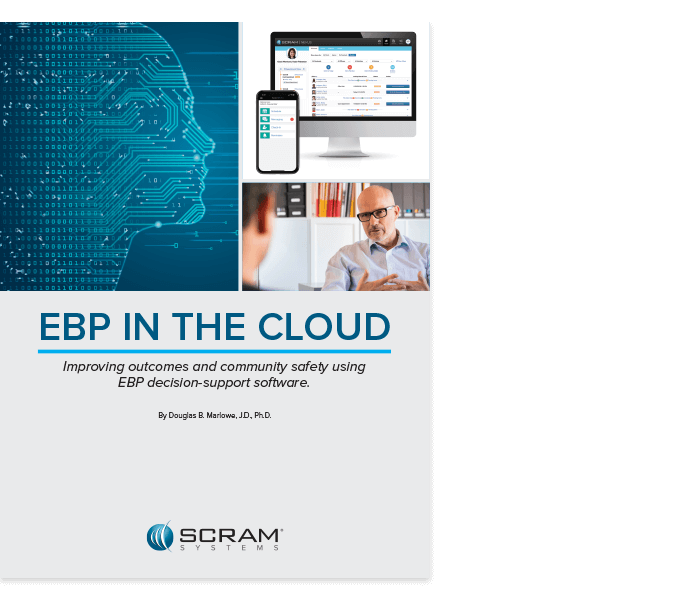Utilizing Automation for Corrections Program Placement
Not every program or intervention works for every client. In fact, providing too much, too little, or the wrong kind of treatment services can not only fail to improve client and program outcomes but can sometimes make them worse. For example, putting clients with different levels of risk or need in the same correction program has been shown to increase crime, substance abuse, and more, as it exposes lower risk clients to antisocial peers and values.
SCRAM Nexus integrates risk, need, and responsivity principles into your department’s existing models and automates client program placement based on their criminal history and risk and need level. This allows officers to spend less time assigning clients to the most appropriate supervision models.
What are the Risk, Need, and Responsivity Principles?
The most successful probation, pretrial, and parole programs integrate evidence-based practices (EBP) to maximize outcomes for clients. One segment of EBP includes the risk, need, and responsivity principles, or RNR. Studies have found that the best outcomes in the criminal justice system are achieved when the intensity of supervision is matched to a client’s risk for recidivism (criminogenic risk), or likelihood of failure in rehabilitation (prognostic risk), and when correction and treatment programs are focused on the specific disorders or conditions that predispose a client to criminal behavior (criminogenic needs).
For example, studies demonstrate that high-risk individuals should meet with a probation or parole officer more frequently, receive extensive hours of cognitive-behavior counseling, and undergo drug and alcohol testing and electronic monitoring for at least 90 days to modify criminal behavior. In contrast, low-risk clients—who are more apt to abstain on their own—placed in the same intensive program can adopt more severe criminal behaviors and have a higher chance of recidivism.
Uncovering and Applying RNR Principles Using Technology
Despite decades of compelling research validating the RNR principles, many criminal justice professionals incorrectly place clients in pretrial, probation, and parole programs, delivering the wrong type of supervision and treatment.
The software algorithms used in Nexus take the guessing game out of determining which client should be in which program model and helps officers create and deliver the appropriate supervision regimen. By inputting information about a client—such as their criminal history, mental health information, substance dependence or abuse history, etc.—Nexus can calculate that individual’s risks and needs and automatically place them in a program based on existing departmental program models.
As clients learn and progress in their programs, supervision adjustments also need to be made to avoid stagnation and recidivism. Nexus automatically adjusts to these changing needs and risks and can provide suggestions to better meet the needs of each individual client.
By leveraging technology, supervision officers can more accurately place clients into appropriate programs and improve tracking of their progress and success.


